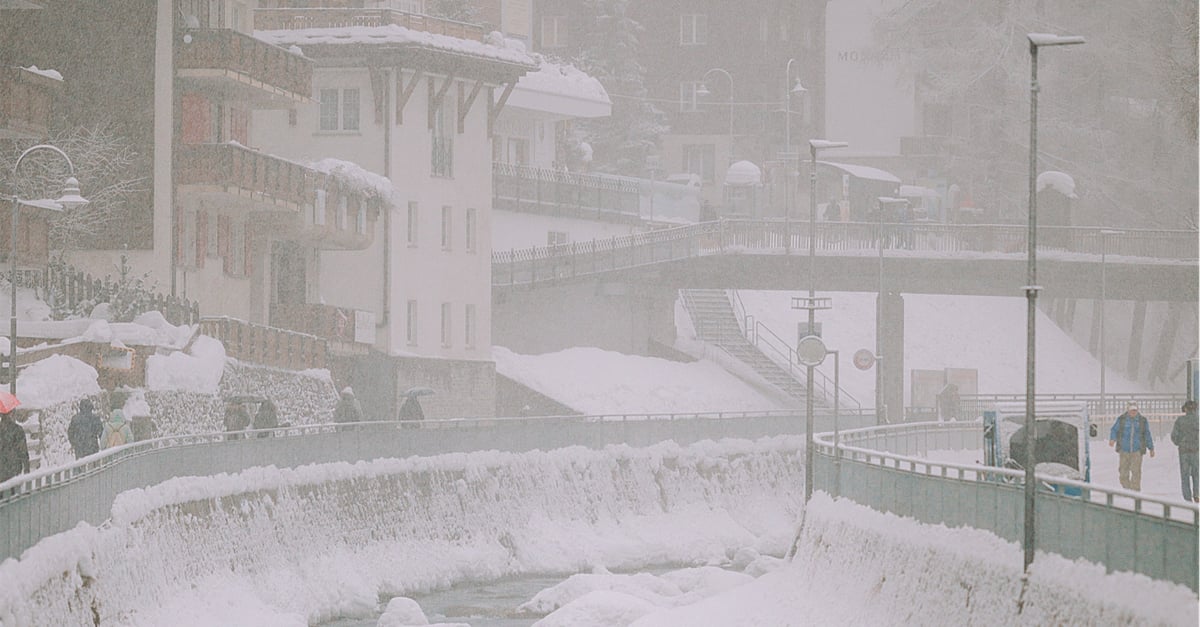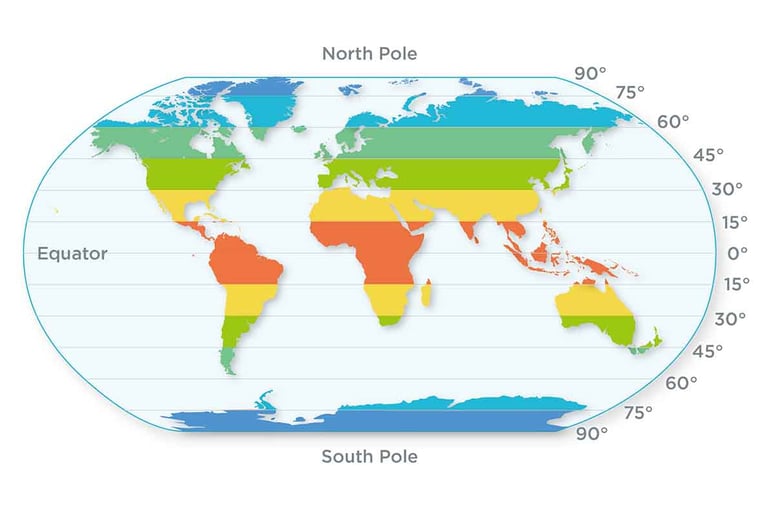
Imagine living in the UK and savouring the last moments of winter, but waking up on the final week of your February to suddenly unrelenting cold and heavy snow. Overnight, your front porch has filled with several inches of snow, and your car looks as if it turned to snow.
This is what many people living on the British Isles felt when the Anticyclone Hartmut, commonly known as the Beast of the East of 2018, brought a cold snap on 22 February. Its combination with Storm Emma’s strong winds brought the snowfall to the southern parts of the UK in early March, prolonging the cold snap to 10 days.
The same weather pattern was observed this 2021, where Britain went through a summery February before being met with a frigid and white April. The unusual cold during the supposed springtime was the UK’s coldest average low temperature since 1922. Based on the Copernicus Climate Change Service, it was the coldest average temperature for Europe since 2003. For agricultural states like France, this meant frosted vineyards and farms and the overall delay in harvest. People who were also putting up picnic tables and beer gardens had to stall their outdoor plans to steer clear of the cold weather.
Amid the coronavirus pandemic, it’s important to be prepared against any external forces that can threaten your health.
What causes extremely cold weather
When using technicalities, cold temperature is defined as a relatively low temperature compared to the human body. However, “cold” is a subjective adjective. In a tropical country, cold temperatures can be under 10 °C (50 °F). Meanwhile, countries in the northern hemisphere can have temperatures as cold as -69.6°C (-93.3°F).
Because of its subjectivity, it is difficult to say what temperature is considered extremely low. Instead of comparing countries in different parts of the world, scientists take a look at the historical data of one place and its position on the globe. This can determine if a certain country is going through extreme periods of cold.
In the Southern part of the United States, near-freezing temperatures are considered extreme cold. The same can be said for Australia when the state’s northern cities dropped to 7.4°C (45.32°F) this 2021.
How do these sudden temperature drops happen? In truth, several factors can cause these changes to happen.
During winter the Earth’s axis is tilted away from the sun; angling the northern hemisphere farther from solar radiation. This causes winter storms and cold outbreaks to occur, winds bringing chilling temperatures from the north pole.
As the planet rotates, an effect called prevailing winds starts. This means that the atmosphere will circulate the world, normally different between three latitude zones:
- 0° to 30°: Lands within this zone experience the trade winds that blow from east to west and converge at the equator.
- 30° to 60°: Fondly called the westerlies, these winds blow from west to east and rise towards the Arctic (or down towards the Antarctic) circle.
- 60° to 90°: Normally confined to the highest-latitude regions on Earth, these winds are called the polar cells.

Because of these different factors, our planet’s temperatures vastly differ between the equator and the poles. During summer the temperature difference is the smallest because the polar areas are exposed to nearly 24 hours of continuous sunlight. During winter, the difference is largest because these same areas are almost always hidden in darkness.
As a result of these temperature differences, large low-pressure zones form on each pole. These cyclones amass cold, dense air around them. Normally, the temperature differences are great enough that these vortices stay on the northern and southern poles throughout winter.
However, when these vortices weaken, they can weaken and break up into smaller fragments, interacting with higher temperatures outside the polar regions. As these interactions occur, the polar vortex can be displaced and moved south and cause cold snaps in various parts of the world.
With global warming affecting the planet, more of these cold snaps occur. When there are warmer land temperatures particularly in northern parts of North America, Europe, and Asia, more heat is transported to the northern pole. In turn, the heat causes the polar vortex to destabilise more.
In the coming years, scientists expect that extreme cases of cold temperatures will escalate during winter along with the warmer temperatures during the summer.
Now that we know what causes our external environments to change, it’s time to take a look at how your body responds when you experience cold weather.
How does extreme cold weather affect us
When experiencing extremely cold weather, our bodies respond to it differently. From your body structure alone, you can make some educated guesses. Tall people tend to become faster than shorter people, particularly because they have a bigger surface area that is exposed to the cold.
Your location also tells you how your body is acclimated to the cold. People who live in northern parts of America, Europe, and Asia have bodies that have adapted to extreme conditions.
In truth, extremely low temperatures have their benefits. Therapists use cryotherapy to treat various patients who experience pain and inflammation. Normally, conditions like rheumatism, muscle and joint pain, and fibromyalgia are also treated with a cryogenic chamber.
When you’re exercising, cold temperatures can also help you burn more calories as you’re expending more energy just to stay warm.
Though cold weather can be beneficial to your health, it can also increase your chances of getting sick.
You might have been a victim of the common flu during the winter month after spending a minute or two longer than usual. In a PLoS Pathogens study, doctors learned that the flu virus is more stable and stays in the air longer when it’s cold and dry. Hence, the virus spreads so easily and increases your likelihood of getting sick when you go for a long walk on a cold, winter day than when you do the same on a warm day.
We also mentioned earlier that cold weather can increase your body’s energy expenditure. When prolonged or exposed to lower temperatures, your blood vessels can constrict, breathing can grow shallow, and blood can slightly thicken. With your body’s mixed reactions, you may experience chest pains that exacerbate existing heart diseases.
Leaving out a body part exposed to the cold for too long can also lead to frostbite, often damaging your ears, nose, cheeks, chin, fingers, and toes. These body parts can feel hard or waxy, eventually forming blisters.
In other cases, when you’re unable to get to a warm shelter, your body temperature begins to drop and you’re more likely to develop hypothermia. The longer you stay outside, then you’re more prone to experiencing shivering, clumsiness, confusion, exhaustion, or urination.
When you’re not properly dressed, cold air can also dry your throat and cause your lungs to contract. Not only will your throat feel irritated each time you inhale, but you will also find it more difficult to breathe, a serious problem for people who suffer from asthma.
Because of the dry weather, improper hydration makes your skin go dry and flaky. If not tended to you may experience inflammation, cracking and redness, making it difficult for you to move. People who suffer from eczema are particularly vulnerable to this.
There are also fewer adverse effects when you’re out and about in extremely cold weather, but can also cause discomfort and injuries.
On days with blizzard-like conditions, it is difficult to get around and can cause you to get lost or lose your balance. While anyone is at risk of getting hurt and slipping on icy sidewalks or stairs, older people have higher chances of sustaining serious injuries.
The cold weather can also encourage sedentary behaviour, leading you to “hibernate” in your home for days or weeks. While staying home and doing nothing doesn’t have immediate health consequences, it increases your risk of obesity and heart disease in the long run. This can also worsen when you begin craving more food to stay warm.
How to stay healthy
The winter’s biting cold might be some of our favourite times to stay indoors and enjoy a warm cup of tea. And there are ways we can prevent the cold from seeping into our bones and causing the flu.
- Get a flu shot
A flu shot buffs up your immune system against flu for about half a year. As many doctors encourage the public to get a shot every year, the best time to get yours is during September or October, in preparation for the cold winter season.
Once you get your shot, it will take two weeks for it to start working. When you do go out in the middle of autumn or winter with a flu vaccine, you’re lessening the severity of the sickness and preventing multiple trips to the doctor. You may book an appointment with your family doctor to find out what type of flu vaccine is better for your body.
- Keep yourself and your place clean
Frequently cleaning and disinfecting your home can also reduce the spread of viruses, such as the flu and COVID-19. Make sure to wipe down surfaces with cleaning solutions that kill bacteria. When you do so, you cull any viruses that may have clung to your clothes or things when you entered your house. As we are also observing other variants of the coronavirus, maintaining a clean place will also help your immune system stay strong. Though you may be vaccinated against coronavirus, scientists say that you are not immune to the virus. Making the extra effort to wipe down surfaces can make sure of that.
Aside from your environment, ensure that you also clean yourself regularly. This also includes washing your hands frequently, keeping your hands away from your eyes, nose, and mouth, and staying hydrated. Of course, it is also important to maintain social distancing, especially if you have not completed both of your shots or if you’re meeting with people who haven’t completed theirs.
- Maintain a nutritious diet
We are all responsible for what we consume. However, for many of us, what we buy at the grocery, what we cook at home, or what we order at restaurants are already routines that our brains have memorized. That Friday night pizza or lasagna that you normally have delivered, potato chips that you munch on while you work, and cans of beer on the weekends are already part of your lifestyle. Part of creating and maintaining a healthy diet is unlearning unhealthy habits that we unconsciously have.
It’s important to make the change slowly. If you like pasta, consider replacing it with a high-fibre wholewheat pasta that aids your digestion and helps you feel full longer. The same would apply to rice or bread. The more colourful the carbohydrate, the healthier they are.
We also recommend adding fresh fruit or vegetables to your breakfast and swapping out your usual mid-day snack with whole foods. Processed or refined sugars and salts are detrimental to your body in the long run. Along with changing your diet for the better, you can also ask your doctor about multivitamin tablets that can provide additional protection during the winter months.
- Stay active
Your diet is just one aspect of having a healthy lifestyle. Physical activity and sleep hygiene are important techniques to protect your health. According to the World Health Organization, doing at least 150 minutes worth of moderately intense activity or 75 minutes of vigorous physical activity per week helps your heart stay healthy and improves your metabolism.
If you’re stuck to your seat throughout the day, spend a few minutes doing house chores or playing with your pets to stay active every day. You can also go on Youtube and follow online exercise classes. While fitness centres are slowly opening up, walking around your home during cold winters helps your body stay strong.
When it comes to sleeping, we recommend creating a bed climate or sleeping environment that is conducive to rest. To stay warm and prevent sickness, use an electric underblanket to help you fall asleep right away. Wellcare’s heating products utilise 4D DWF technology to provide a comfortable depth of warmth. Especially during extremely low temperatures, having an extra source of heat is comforting at nighttime. Remember that resting and relaxing is just as important as your exercise and diet.
- Dress warmly
When you do go out, it’s important to protect your fingers, toes and face, as these are more likely to suffer from frostbite. Aside from your thermals, coat and scarf, remember to wear gloves, mufflers, masks, wool socks and thick-soled shoes. During harsher weather, we recommend staying in and waiting for the storm to pass.
Nature is difficult to predict from day today. Just like the Beast of the East last 2018, cold snaps can happen with little to no warning. That said, we recommend paying attention to every weather alert and warning, being ready for anything. If you get snowed in, make sure you have enough supplies to last you a few days. If you have a car, stock it, as well, with emergency supplies that can keep you warm, hydrated, and well-fed when you’re caught in a storm on the road.
Not being able to sleep well has become a big problem for everyone in the world. Nowadays, we all experience much more mental stress and that is making it hard to relax.
Are you looking for ways to get a better night of sleep? Building a comfortable environment is crucial to falling asleep and rest well.
Would you like to sleep better and gain more energy the next day? If so, this "How to create the perfect sleeping environment" Ebook is perfect for you.
Click on the image link below to download this FREE guide!


.png?width=512&name=united-kingdom%20(1).png)

